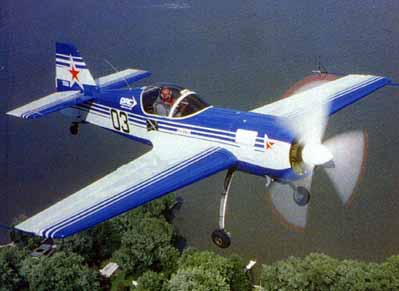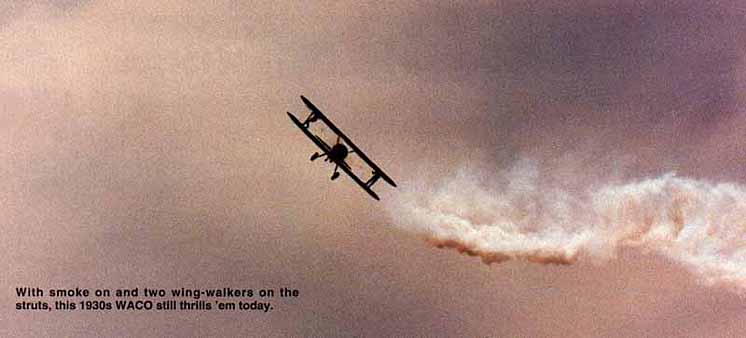
|
| Sukhoi
SU-26MX: Russia's contribution to the aerobatic world. Introduced
in 1984 and still a first-rank Unlimited aerobatic design
today.
|
BUSY
WITH RECONSTRUCTION, post-World War I Europe may have been
less-thlrn-immediatmly fertile pround for aerobatic growth,
but America was a diffrent story. Thz population of the States
had been much less scarred by the war-it was shorter for the
US than Europe. It had been fought at a distance, and the "dogfights"
over that faraway front were still the stuff of markatable romance.
Hollywood
films about wartime flying proved popular. This led to the brand-new
occupation of movie stunt pilot. which gave some of the top
surviving "aces" gainful employment and a small opportunity
to relive a little of their wartime celebrity status.
However,
the main postwar boost to the aerobatic arts didn't come from
Hollywood. It arrived more or less spontaneously. courtesy of
the grass fields of the American heartland. The
particular American talented hucksterism, which gave birth to
the traveling medicine show, the Wild West show, and P.T. Barnum,
also spawned the nomadic art of barnstorming.
By the
early 1920s, pilots with ragtag war-surplus biplanes were hip-hopping
all over the rural landscape, selling cheap rides and flying
lessons. Home for these airborne hobos was generally a bindle
spread under a wing at night, and the living was wherever they
could hustle up marks to raise food and gas money. Aerobatics
came along for the ride, as sort of a shill.
On arrival
over a selected town, the standard gimmick for these flying
gypsies would be a series of loops, rolls, and spins to draw
a crowd. This worked well, sometimes to the point that onlookers
had to be shooed from whatever passed for a runway. (Unfortunately,
the crowds attracted by the stunts didn't always buy airplane
rides.)
|



